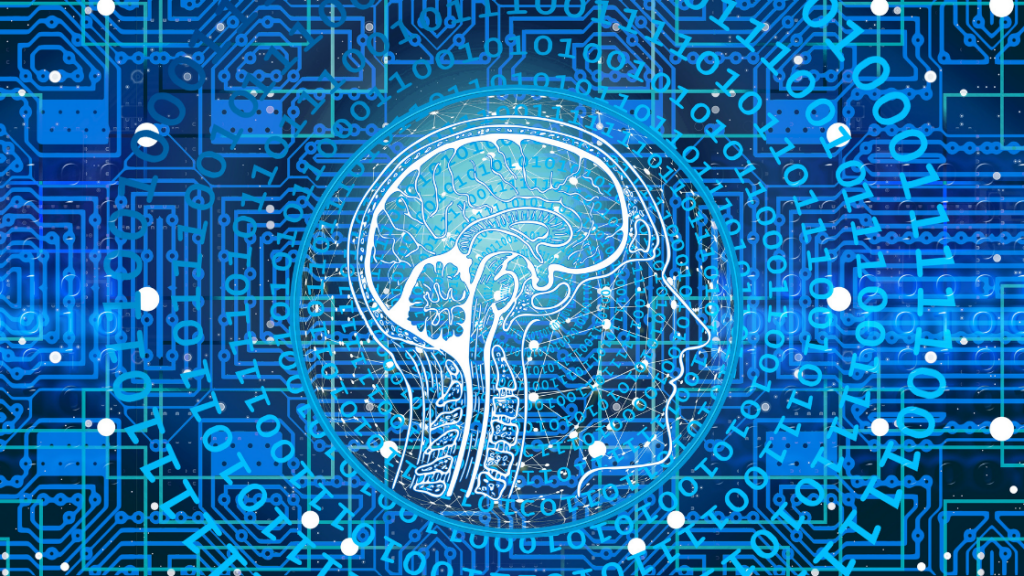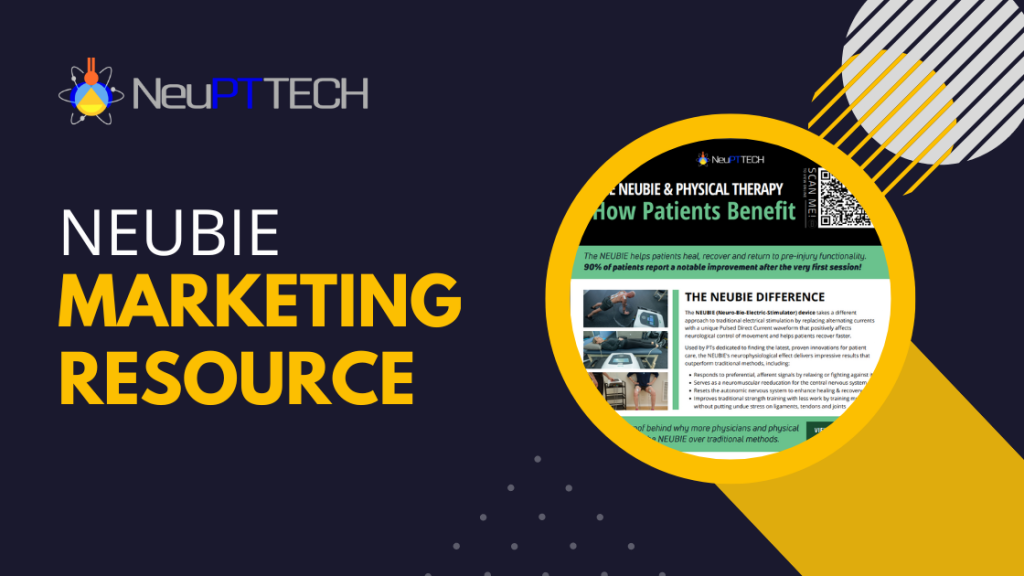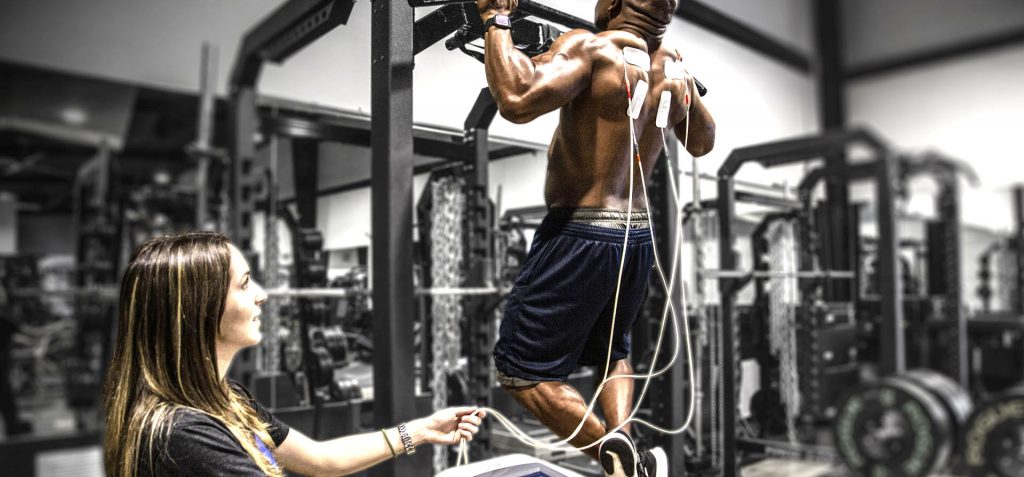
How Does the NEUBIE Work: The Diagnostic Process
The NEUBIE is an incredible device for physical therapists who seek the best patient outcomes in the shortest amount of time. To understand how the NEUBIE works, let’s breakdown the diagnostic process as outlined in the white paper: “NEUBIE A New Paradigm in Electrical Stimulation” by Garrett Salpeter, Founder of NeuFit and partner of NeuPTtech.
In NeuPTtech’s experience as the #1 NEUBIE distributor for the physical therapy industry, the NEUBIE is extremely beneficial in helping patients recover from pain and injury.
As Salpeter explains, when the NEUBIE sends a sensory signal to the central nervous system (CNS), the CNS can respond by either relaxing into that signal or fighting against it. The ability to preferentially send afferent signals is extremely important, as it lays the foundation for many of the neurological reprogramming protocols for which NEUBIE is used.
<<Please Note: The following is a paraphrased excerpt from Salpeter’s white paper with commentary from Jason Waz, Founder of NeuPTtech.>>
Understanding the NEUBIE Diagnostic Process
Thanks to its unique effects, we can use the NEUBIE in unique ways to treat patients. As part of the NeuFit protocols, the device is used diagnostically to identify areas where the body is governing or limiting range of motion, speed of movement and muscle output.
“What does this mean to our patients? Simply put: I teach NeuPTtech-trained NEUBIE Practitioners to inform their patients that we are able to identify two spots on the injured area with 100% certainty, seeing where there is a disconnect between the nerves and the muscles. Patients immediately realize they’ve never been told this by any other physical therapist with this much certainty, and this my friends is what transforms them into what I call “Practice Evangelists” very quickly.”
– Jason Waz, Founder of NeuPTtech
Here’s how it works: In the diagnostic scan, one electrode is stationary, while the other is scanned around on the body.
Wherever this scanning electrode is on the body, it will stimulate all of the electrically-sensitive tissue in its vicinity. It could stimulate the sensory receptors that report information on movement, position, temperature, chemical state, vibration, etc.
The fastest afferent pathways are the muscle spindle (MS) pathway (which reports muscle length and velocity of lengthening) and the golgi tendon organ (GTO) (which reports the amount of force, or load, on a muscle and its tendon.)
Because these are the fastest pathways, their signal will reach the CNS first and be the first to be acted upon. These pathways lead to two different types of governors on movement, excessive tension and deficient activation. So, by stimulating these pathways, we can identify where the body is governing and limiting its movement.
The First Governor: Excessive Tension
If the body is carrying excessive tension in muscles and not allowing them to eccentrically elongate as they should, that tension will be modulated via the MS pathway. The MS pathway constantly monitors muscle length. As soon as that muscle lengthens to the perceived threshold of danger, the stretch reflex kicks in to contract the muscle. This is a protective mechanism designed to prevent the muscle from straining or tearing. It is useful, but often it is set too conservatively and leads to excessive, inappropriate muscle tension.
“Basically, the patient’s nervous system adapts very quickly to the sensory stimulus and afferent feedback loop that the NEUBIE treatment provides. This is the reason we typically get such immediate, dramatic results within the first few sessions – and always within the first four sessions.”
– Jason Waz, Founder of NeuPTech
The Second Governor: Deficient Activation
If muscles are being under-activated, they will not be as available to turn on and do their jobs of protecting the body and creating movement. Activation of a muscle creates tension, and it is this tension that is monitored in the GTO. The GTO, in turn, reports to the CNS.
Whenever that tension reaches its threshold of danger, the CNS inhibits that muscle to prevent it from contracting too hard and tearing itself off the bone. Of course, this is important, but it is also often set way too conservatively. In this state, the GTO pathway leads to the inappropriate underutilization of muscles.
So, as the scanning electrode is moved around a client’s body, it will be stimulating these pathways.
Results of the NEUBIE Diagnostic Process
When stimulating an area that works well, these pathways will be activated, the signal will be evaluated by the CNS, and the CNS will send back the “All Clear!” signal. To the client, the signal will still feel pleasant.
When stimulating an area with one of these problems, or governors, the experience will be much different. The signal being sent from one of these areas will cause a more intense reaction. If it is an area with excessive tension, then the signal will trigger the same MS mechanism described above. The body responds with a strong “Contract!” signal and it feels much more intense to the client. The contraction can be intense, beyond what happens when stimulating a motor point. There is an additional quality of subjective discomfort associated with it, and typically other compensatory movements.
Likewise, if the area being stimulated is one of deficient activation, there will also be a more intense reaction. The CNS will receive a signal via the GTO, reporting that more load is on that muscle than has been in the recent past. The CNS notices that this is a much larger signal and identifies it a threat. In response to the threat, the CNS creates numerous contractions in an attempt to “lock down” the area and give the body a chance to protect itself from the threat.
This diagnostic process allows practitioners to identify both weakness and excessive tension, and to do it quickly and precisely. For these reasons, the NEUBIE has the potential to improve the speed and accuracy of diagnosis in the worlds of physical therapy, chiropractic, athletic training and sports performance.
“From a practice standpoint, the ability to train every physical therapist on how to effectively utilize this NEUBIE technology within their normal treatment regimen is what develops the ‘aha’ moment with patients early and often. It’s the biggest driver for practice expansion that I’ve ever experienced!”
– Jason Waz, Founder of NeuPTech
—
To learn more about how the NEUBIE can generate positive patient outcomes in your practice, contact NeuPTtech for a consultation or join our virtual NEUBIE Level 1 certification course.


 Previous Post
Previous Post Next Post
Next Post

